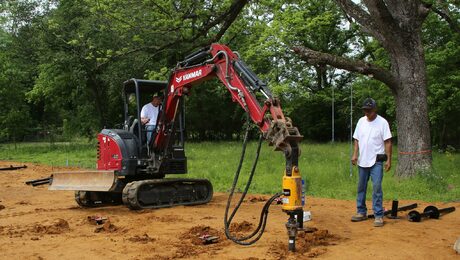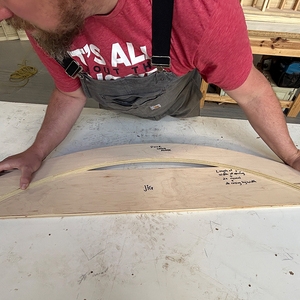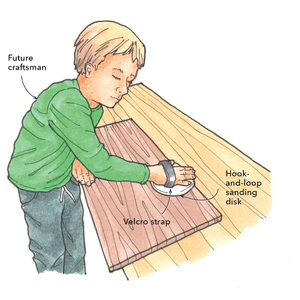Help Understanding Old Circuit Panel
I have an 80 year old house with a modern 200-amp circuit breaker service panel. One of the circuits in this panel feeds the original house panel (now a sub-panel) which is an 80-amp double-fuse 10-circuit panel. Most of these fuses have 20- or 30-amp fuses in them. These circuits mostly each feed about 3-5 lights/outlets but one of them feeds over 20 (practically an entire floor of the house). A few questions:
1. I’m assuming that the fuses are too big for the capacity of the panel – true?
2. I’m assuming it is bad to have so many outlets/lights on a single 30-amp fuse – true?
4. Why are there two fuses per circuit? I’ve never seen anything like that.
Thanks!
David in Iowa



















Replies
Unless the wire is Number 10, the 30 amp fuses are too high. I would put in 20 amp right away. If these blow, find out what else is on the circuits.
I would also gradually rewire the circuits so they are all fead off the new panel and get rid of the old fuse box.
You get out of life what you put into it......minus taxes.
Marv
1) What size is the breaker on the circuit feeding the old panel? If it's 20A or less then the fuses are basically just making the connections -- they aren't really doing anything.
2) It's not good to have than many lights/outlets on a single circuit, but not necessarily bad either.
3) Fusing both sides was common in the olden days of 120V-only service. No one took particular care in keeping hot and neutral straight, so it was safest to fuse both sides.
1. I'm assuming that the fuses are too big for the capacity of the panel - true?
No, the sum of the individual fuses have nothing to do with the rating of the box. The individual fuses protect the wiring associated with them the main prevents the total draw from exceeding the capacity of the box.
2. I'm assuming it is bad to have so many outlets/lights on a single 30-amp fuse - true?
Considering that a 100watt light draws less than 1 amp, 20 would be well within the safety limit of the circuit if it has the proper size wires. The disadvantage is that one fuse can darken almost the entire house.
4. Why are there two fuses per circuit? I've never seen anything like that.
Answered above
Jack
The two fuse thing (fused neutral) is a bad idea, and you should replace the panel if you can. There is some potential for a circuit to be live, that someone thinks is off, when only that neutral is blown. It could be a shock hazard for the uninformed that go into the building.
We rent a commercial space that has a panel that old. It's got exposed buses inside, and the individual circuit disconnects are all exposed metal with wooden handled knife switches. It has the dual fuses like yours. It's scary and fascinating. What made it fun when we first started renting was that there were no switches for the lights. You had to go fumbling in that box, in the dark to turn the lights on.
I've added wall switches, but never gotten around to changing the box out. It looks like a real PITA job, and I'm not the building owner.
Interestingly enough, we got shut down by code enforcement for fire regulations. It was more of a political thing than a public safety thing. Anyway we fixed the few minor issues and the whole inspection crew came through. The electrical inspector just wanted to see a lock on the electrical box. They could have forced a complete electrical upgrade at that point, but didn't.
Dave,
The neutral was fused for a period early on in the history of electrical wiring, not because the installers didn't keep track of polarity, but because often one return conductor was shared between two circuits (supply conductors).
This was in houses with 110V supplies, i.e., only one pole, so the neutral fuse was intended to protect the neutral conductor from being overloaded. An overload wasn't likely, though, because only one 40 watt lamp was installed per room. Then the first electric appliances were introduced--a common one being the toaster--that "plugged" into the screw socket for the lamp. The fused neutral became pretty important then. And as some one said before, it also could trip up anyone who didn't understand that the neutral could be open but the hots energized.
The whole concept of a shared neutral in old houses is important when working on the systems--you can verify that one circuit is de-energized, and be working on the wiring, when a load is turned on on a circuit that shares the neutral. One 60 watt lamp draws 500 mA @ 120V, and if your body resistance is low and you're well-grounded, if you get in the return path, even the voltage on the neutral is enough to push enough current through you to electrocute you. (20 mA will send a healthy young male's heart into fibrillation).
Cliff
Do you have any ideas beside a bad primary neutral connection.http://forums.taunton.com/n/mb/message.asp?webtag=tp-breaktime&msg=95850.1
.
.
A-holes. Hey every group has to have one. And I have been elected to be the one. I should make that my tagline.